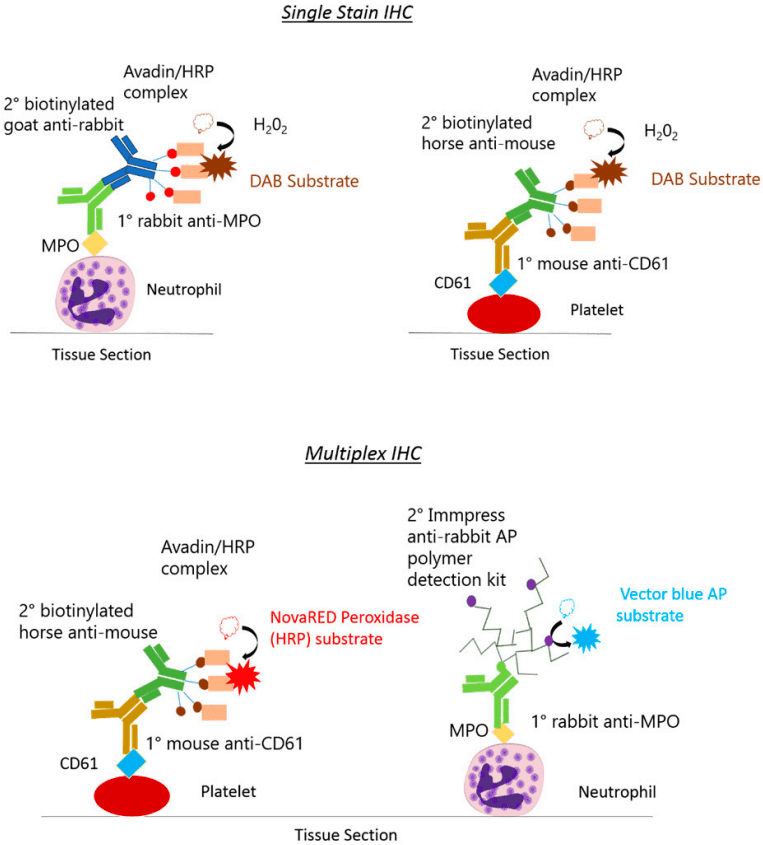IHC Introduction
IHC is a powerful technique that relies on specific binding between antibodies and antigens to localize and detect target antigens in cells of tissue sections. The process involves localizing antigens in biopsied tissue by using specific markers. Common labels include enzymes, fluorescent dyes, and radioactive elements. IHC involving specific antigen-antibody reactions offers distinct advantages over traditional techniques that identify only a limited number of proteins, enzymes, and tissue structures. Therefore, this technology plays an important role in the diagnosis and research of various diseases, especially tumors. Notably, IHC can not only help identify tumors but also distinguish whether a tumor is benign or malignant. Due to its sensitivity and versatility, the range of applications for IHC continues to expand.
The Procedure of IHC
IHC is an indispensable tool in pathology, involving cell classification and diagnosis, and in addition, IHC is very beneficial for determining cell type and organ origin. The key steps in IHC can be summarized as follows: pretreatment of samples to repair antigens masked by immobilization and make them easier to bind to antibodies, selection and preparation of antibodies and reagents, incubation, washing, and counterstaining. Traditional manual staining methods are more flexible and can optimize specific antigen-antibody reactions to obtain accurate experimental results. The emergence of automated IHC machines over the years has also contributed to the reliability and reproducibility of IHC in clinical settings.
 Fig.1 Schematic of single-stain and multiplex IHC reporter systems.1
Fig.1 Schematic of single-stain and multiplex IHC reporter systems.1
Strengths of IHC
- Cost-effective and simple
IHC has a relatively low cost, and the steps are uncomplicated.
- High specificity and sensitivity
In theory, IHC also relies on antigen-antibody interactions to visualize, quantify, and analyze cells at the tissue level.
- Positioning accuracy
The molecules of interest are explored based on maintaining spatial context and tissue structure.
- Wide range of applications
IHC can elucidate complex interactions within the tissue matrix and disease heterogeneity in a variety of diseases.
Limitations of IHC
- The combination of methods used in different laboratories may vary.
- Affected by various factors, such as the source and quality of the primary antibody.
- Technical imprecision may lead to erroneous results.
- Not as sensitive and specific as PCR-based techniques.
In addition to providing technical support, Creative Biolabs is pleased to provide our customers with custom natural autoantibodies (NAA) services to help you move your projects forward. Please contact us in time for more details.
Reference
- Arnold, Stephanie, et al. "Single and Multiplex Immunohistochemistry to Detect Platelets and Neutrophils in Rat and Porcine Tissues." Methods and Protocols 5.5 (2022): 71.

